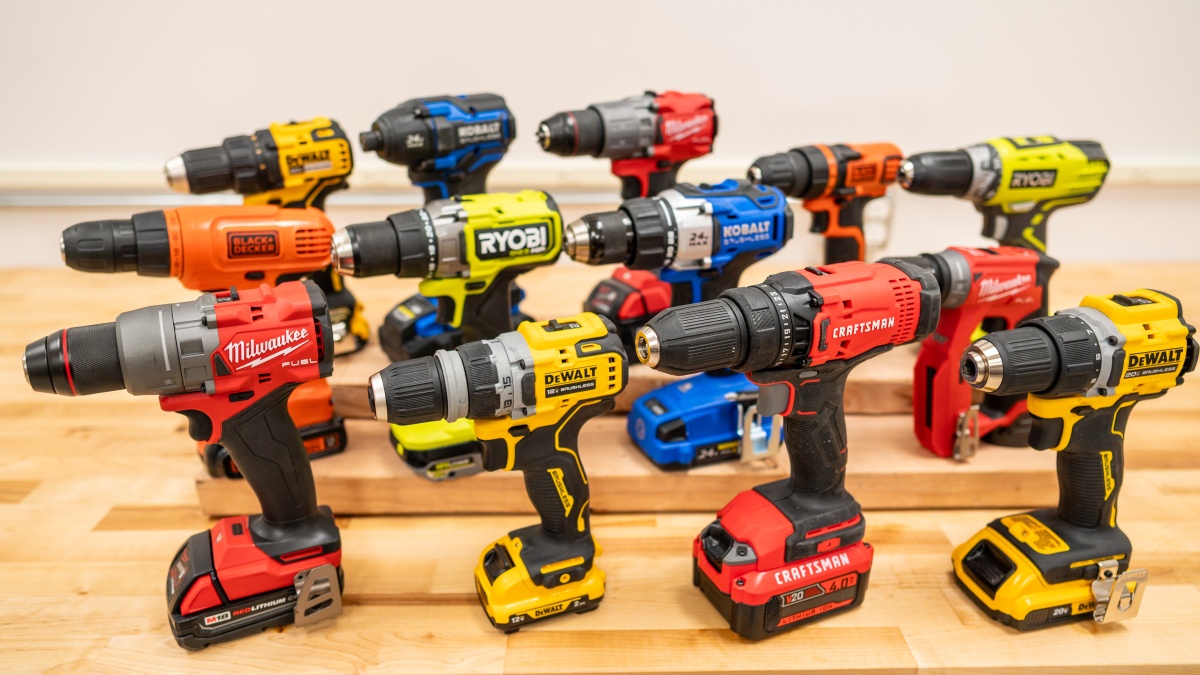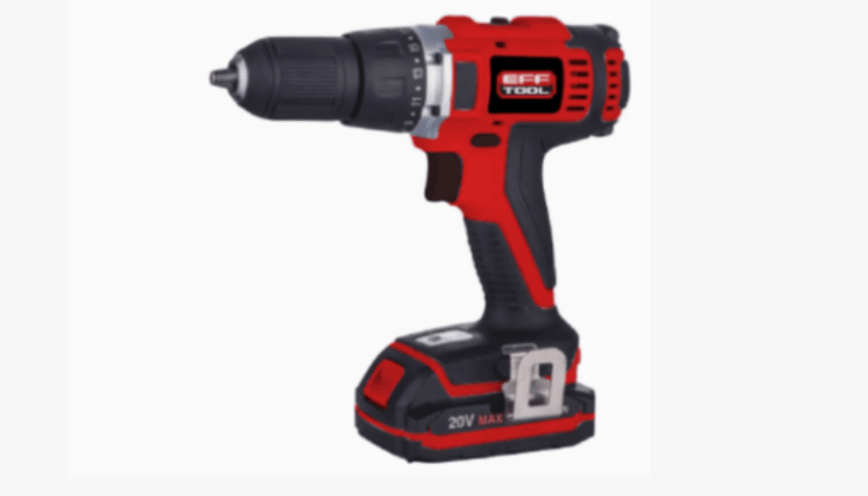Choosing the right power drill can feel overwhelming with so many options available. But what if you could find the perfect drill that fits your needs, saves you time, and makes every project easier?
This guide will help you understand exactly what to look for, so you can pick a power drill that works for you—whether you’re a beginner or a seasoned DIYer. Keep reading, and by the end, you’ll feel confident making the best choice for your next project.

Credit: www.youtube.com
Types Of Power Drills
Power drills come in different types to suit many tasks. Choosing the right drill makes work easier and faster.
Understanding the types helps you pick one that fits your needs and budget.
Corded Vs Cordless
Corded drills need to be plugged into power outlets. They provide constant power without running out of battery.
Cordless drills run on batteries. They offer freedom to move around but need charging after use.
- Corded drills:Strong power, no battery limits
- Cordless drills:Portable, good for quick jobs
- Consider:Job type, power needs, and mobility
Hammer Drills
Hammer drills add a pounding action while drilling. They work well on hard surfaces like concrete and brick.
Use hammer drills for jobs that need extra force to break through tough materials.
- Best for masonry and stone
- Can switch between normal and hammer mode
- Not needed for wood or metal drilling
Impact Drivers
Impact drivers deliver strong rotational force with quick bursts. They are great for driving screws and bolts.
These tools make tasks easier by reducing hand strain and slipping.
- Ideal for heavy-duty fastening
- Use with hex-shank bits
- Not designed for regular drilling
Key Features To Consider
Choosing the right power drill can make your work easier. You need to think about several important features before buying.
Understanding these features helps you pick a drill that fits your needs and projects.
Power And Voltage
Power shows how strong the drill is. Voltage tells the energy it uses. Higher voltage means more power.
For small jobs, a lower voltage drill is enough. For heavy work, choose a drill with higher voltage.
- 12V or less: good for light tasks
- 18V to 20V: best for most home projects
- Above 20V: suited for heavy-duty work
Chuck Size
The chuck holds the drill bit in place. It comes in different sizes, usually 3/8 inch or 1/2 inch.
Smaller chucks fit smaller bits. Larger chucks hold bigger bits for tougher jobs.
- 3/8 inch: best for light drilling and screw driving
- 1/2 inch: fits bigger drill bits for heavy work
Speed Settings
Speed settings control how fast the drill spins. Different speeds work better for different tasks.
Lower speeds give more control for driving screws. Higher speeds are good for drilling holes.
- Variable speed helps adjust for different jobs
- Two-speed drills offer basic speed options
- More speed settings give better precision
Battery Life
Battery life shows how long the drill works before recharging. Longer battery life means less downtime.
Choose a drill with a battery that lasts through your projects. Some batteries recharge faster than others.
- Look for lithium-ion batteries for longer life
- Check how many amp-hours (Ah) the battery has
- Keep a spare battery for longer use
Ergonomics And Design
Choosing a power drill means thinking about how it feels in your hand. Good design helps you work longer without pain. Ergonomics focus on comfort and ease of use.
A well-designed drill fits your hand and reduces fatigue. This makes your job easier and safer.
Weight And Balance
The weight of a drill affects how long you can use it. A heavy drill tires your arm quickly. Balance means how the weight is spread out.
A well-balanced drill feels steady and does not pull your wrist. This helps you control the drill better.
- Choose a drill light enough for your strength
- Look for models with balanced weight distribution
- Test how it feels when holding and using it
Grip Comfort
Grip comfort is key for safe drilling. A soft, textured grip stops slipping. It also reduces hand strain during use.
Find a drill with a handle that fits your hand size well. Some grips have rubber or foam padding for extra comfort.
- Look for non-slip grip materials
- Choose handle shapes that feel natural
- Test the drill’s grip before buying
Size And Portability
The drill size affects where you can use it. Small drills fit in tight spaces. Large drills may offer more power but can be bulky.
Portability matters if you move a lot while working. Cordless drills are easier to carry. Choose a size that fits your usual projects.
- Pick compact drills for small jobs and tight spots
- Choose cordless models for easy transport
- Consider the drill’s case or storage options

Credit: www.lowes.com
Additional Functionalities
Choosing the right power drill means looking beyond just power. Extra features can make the drill easier and safer to use.
These added functions help you work better in different situations. They also protect the tool and the user.
Clutch Settings
The clutch controls how much torque the drill uses. This stops the drill from over-driving screws or damaging materials.
You can adjust the clutch to match the task. Lower settings are good for small screws. Higher settings work for bigger jobs.
- Protects screws from stripping
- Prevents damage to work surfaces
- Helps control drilling depth
Built-in Led Lights
LED lights on a drill light up your work area. This is useful in dark or tight spaces.
Good lighting helps you see clearly. It reduces mistakes and improves precision.
- Illuminates dark work spots
- Improves accuracy of drilling
- Enhances safety by showing hazards
Brushless Motors
Brushless motors use electronics to run the drill. They last longer and need less maintenance.
These motors give more power and run cooler. This means the drill works better for a longer time.
- Higher efficiency and power output
- Less heat during use
- Longer motor life with less wear
Budget And Brand Choices
Choosing the right power drill depends on your budget and preferred brands. These two factors help you find a tool that suits your needs and lasts long.
Understanding affordable options and premium models helps you decide how much to spend. Picking a trusted brand ensures quality and support.
Affordable Options
Affordable power drills give good value for simple jobs. They often have fewer features but work well for home use.
These drills are lighter and easy to handle. They usually run on lower voltage batteries but still provide enough power for small tasks.
- Best for occasional drilling and light repairs
- Lower battery voltage, usually 12V to 18V
- Fewer speed and torque settings
- Good for DIY beginners
Premium Models
Premium power drills offer more power and features. They are designed for heavy use and professional work.
These drills have stronger motors, longer battery life, and more control options. They cost more but deliver better performance.
- Higher voltage, often 18V to 24V or more
- Multiple speed and torque settings
- Brushless motors for efficiency
- Built to last with durable materials
Trusted Brands
Trusted brands have good reputations for quality and support. Choosing a known brand helps avoid problems and ensures parts availability.
These brands often provide warranties and customer service. They also make a range of models for different budgets and needs.
- Known for reliable tools and consistent quality
- Offer parts and repairs when needed
- Provide warranties for peace of mind
- Have models for beginners and professionals
Safety Tips For Using Power Drills
Power drills are useful tools for many tasks. Using them safely helps avoid injuries and damage.
Follow safety tips every time you use a power drill. This keeps you and others safe.
Protective Gear
Wear the right protective gear before using a power drill. This protects your eyes, ears, and hands.
- Safety glasses or goggles to protect your eyes from debris
- Ear protection like earplugs or earmuffs to reduce noise
- Gloves to protect your hands from sharp materials and vibration
- Wear tight clothing to avoid catching on the drill
Proper Handling
Hold the drill firmly with both hands. Keep a steady grip to control the drill better.
Always check the drill bit is tight before starting. Use the right speed for your task.
- Keep your fingers away from the drill bit
- Do not force the drill; let it do the work
- Use clamps to hold small workpieces safely
- Keep the drill cord away from the drilling area
Maintenance Practices
Regularly check your power drill for damage. Clean it after each use to keep it working well.
Replace worn drill bits and parts. Store the drill in a dry place to stop rust.
- Inspect the cord and plug for damage
- Keep vents clear to avoid overheating
- Lubricate moving parts as the manual suggests
- Charge batteries fully before use if cordless

Credit: www.techgearlab.com
Frequently Asked Questions
What Features Should I Look For In A Power Drill?
Look for power, battery life, drill speed, torque, and ergonomic design. Also, consider included accessories like drill bits and a carrying case.
Corded Vs Cordless Drills: Which Is Better?
Cordless drills offer portability and ease of use. Corded drills provide consistent power and are better for heavy-duty tasks.
How Do I Choose The Right Drill Size?
Select a drill size based on your project needs. Smaller drills suit light tasks; larger ones handle heavy-duty jobs.
What Is The Importance Of Drill Torque?
Torque determines drilling power. Higher torque means better performance on tough materials like metal or hardwood.
Conclusion
Choosing the right power drill is crucial for your projects. Consider your needs and budget first. Think about the drill’s weight and power. Cordless models offer more flexibility. Check battery life if you choose cordless. Look for comfort in grip and ease of use.
Research brands for reliability and support. Read reviews from other users. Compare features like speed and torque. Don’t rush your decision. The right drill makes tasks easier and enjoyable. Invest time in your choice. It pays off in the long run.
9 min read

